
Hidden Treasures: Jeweled Bindings in Special Collections
The jeweled binding, also known as the treasure binding, is a form of bookbinding that emerged during the Middle Ages and denoted the most important and valuable works of the time. Known for their extravagant covers made with materials such as gold, gemstones, ivory, enamels, or other precious materials, treasure bindings were a symbol of the wealth of the owner, as well as the importance of the texts they contained.
Producing a treasure-bound book was a labor-intensive process. Each aspect of the book was crafted by hand, from producing vellum pages and copying the text, to creating the binding itself. In the medieval era, books with simple covers were already luxuries; to have a book with gemstones and gold on the cover denoted an extremely important text (typically scripture) and a wealthy owner who could afford to commission such a valuable piece.
Books such as these were meant to be seen, so the owner of a jewel-bound book was oftentimes the Church itself, which used books with treasure bindings for services. Like many medieval manuscripts of the ordinary kind (if you can call a medieval manuscript ordinary!), medieval jewel-bound manuscripts also often contained heavily illuminated interiors. The cover often signaled the extravagant and beautiful pages within the book itself.
If a medieval manuscript has survived to the present day, chances are its original cover has not, particularly if that cover was set with precious stones and metals, as such covers were often pillaged. As a result, treasure bindings from the medieval era are few and far between. The surviving medieval manuscripts that do have treasure bindings were often rebound in more recent centuries by subsequent owners. With the advent of the printing press in the 15th century, the practice of treasure bindings, like the medieval manuscript itself, largely died out.
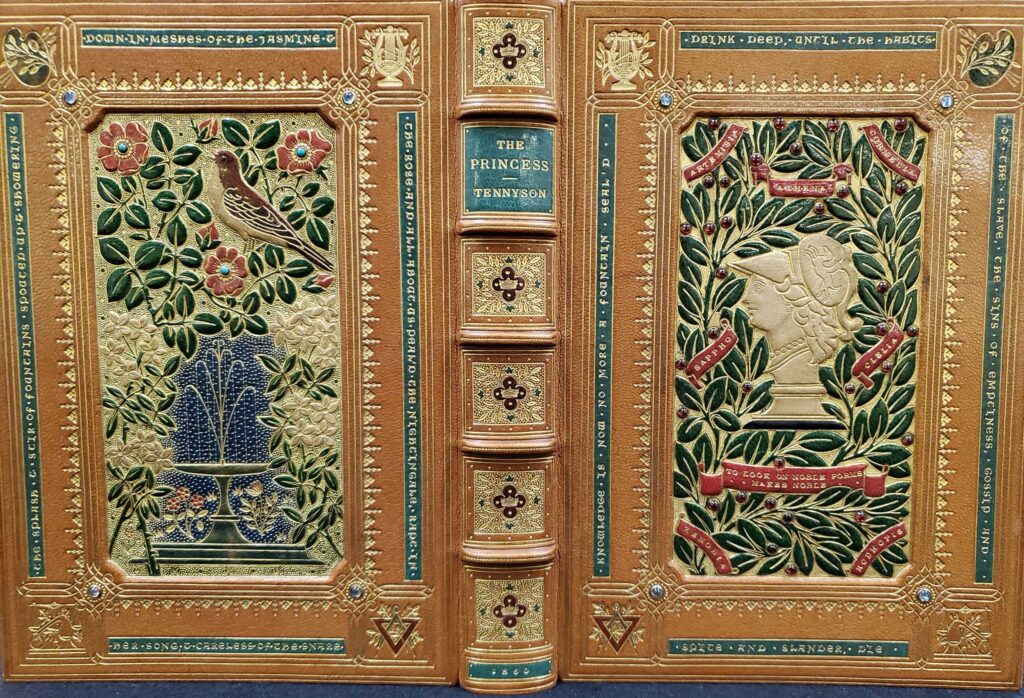
In the 19th and 20th centuries, however, jeweled bindings began to experience a revival as a part of the Arts and Crafts movement. The Arts and Crafts movement was a direct response to the streamlining in manufacturing during the late 19th and early 20th centuries and emphasized craftsmanship and beauty in books over cheap printing. This was happening at a time when book collecting was taking off as well, and several bookbinding firms began to specialize in beautiful books.
Fine leather, gemstones, and detailed fore-edge paintings could be found in far greater numbers, though still for a high price. This time, however, the commissioners of the books were not kings and popes, but industrial tycoons and millionaires. One bookbinding firm that became known for its jeweled bindings was Sangorski & Sutcliffe, founded in London in 1901 by Francis Sangorski and George Sutcliffe.
The firm’s most famous book was a luxurious binding of the Rubaiyat of Omar Khayyam. The book was lost in the sinking of the Titanic in 1912 and is sometimes referred to as the Great Omar. Sangorski & Sutcliffe is also known for its contribution of miniature books for Queen Mary’s Dolls’ House in the early 1920s, which can still be seen on display at Windsor Castle today.
Washington University Libraries’ Rare Book Collections has two jeweled books made by the Sangorski & Sutcliffe firm. The first is a 19th century copy of The Princess, a poem by Alfred, Lord Tennyson. Originally published in 1847, the poem tells the story of a princess who founds a university for female students and the prince who enters the university in disguise in order to woo her. The Sangorski & Sutcliffe version of the book features extensive gold leaf set with rubies and diamonds and comes in a case also decorated in gold leaf. The book is part of the George N. Meissner Collection and can be viewed upon request.
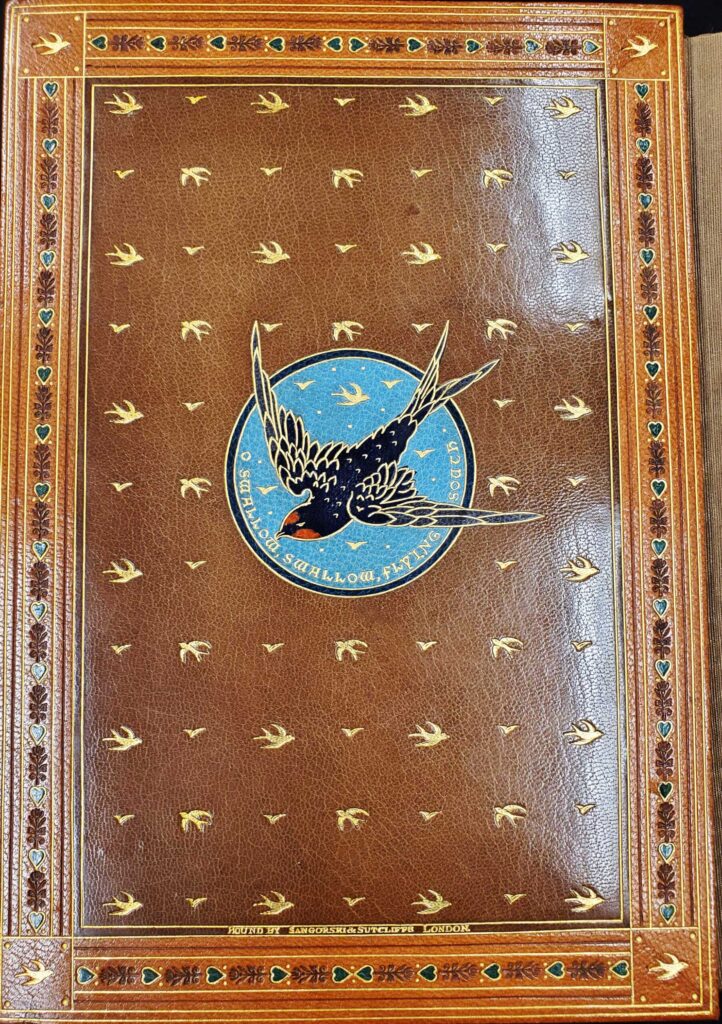
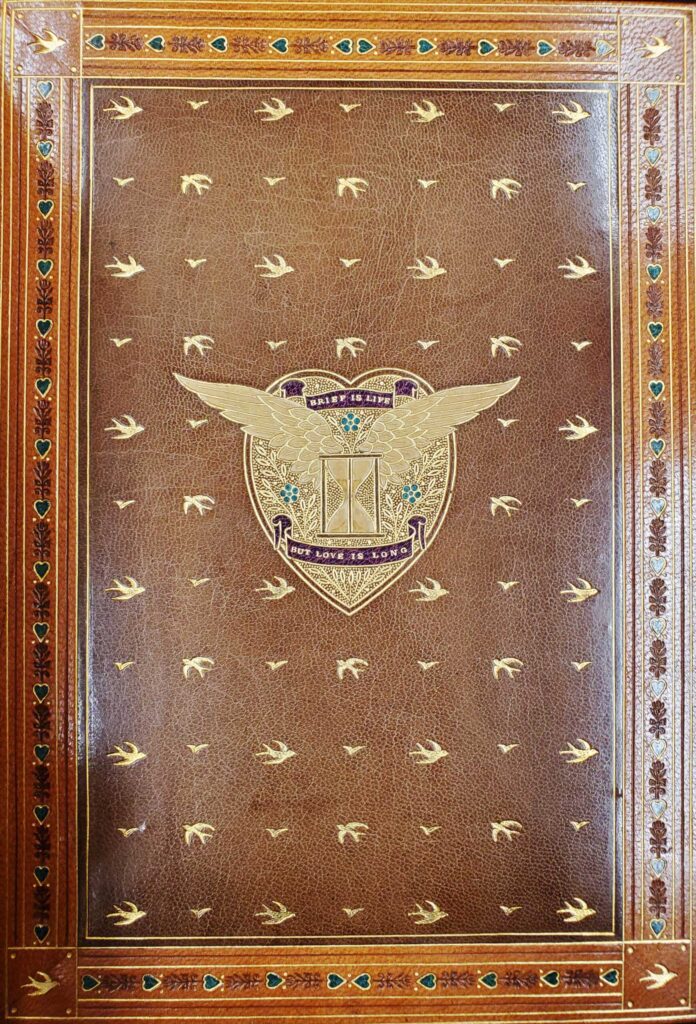
The second Sangorski & Sutcliffe volume in the George N. Meissner collection is a copy of The Deserted Village by Oliver Goldsmith, a poem that was originally published in 1770. The Sangorski & Sutcliffe manuscript was made around 1910. The book is a masterpiece from the Arts and Crafts movement featuring heavily illuminated manuscript pages that were done by hand, possibly by Sangorski’s brother, who illuminated a few other manuscripts for the firm. The poem itself is a social critique of decreasing population in rural areas and pairs well with the hand-illuminated pages.

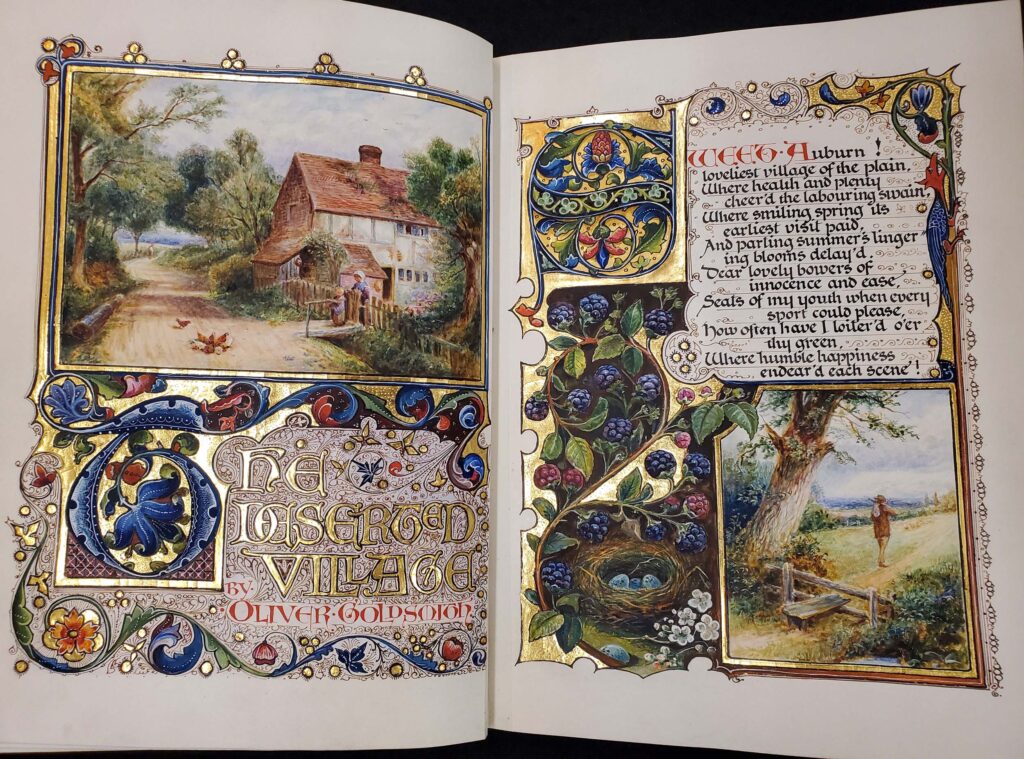
Front Cover and interior spread of The Deserted Village by Oliver Goldsmith. Circa 1910, by Sangorski & Sutcliffe.
Another treasure-bound volume in the Rare Book Collections is the poem Endymion by John Keats, which belonged to W.K. Bixby (for whom Washington University’s Bixby Hall is named). The poem recounts the Greek myth of the shepherd Endymion, who was the beloved of Selene, goddess of the moon. Keats’ poem begins with the famous line “A thing of beauty is a joy forever.”
With a first line such as that, it is little wonder that the binding of the book is so detailed and beautiful. The actual book is a first edition from 1818 that was rebound with its present cover around 1940. The cover is embellished with gold leaf and features a portrait of Keats set with rubies and pearls. This is an example of a Cosway binding, a kind of binding which contains a miniature painting, often a portrait, set into the binding itself. Typically, a pane of glass protects the miniature. This kind of binding originated around the turn of the century, around the same time as the resurgence of treasure bindings.

Treasure bindings are not always elegant tomes with gold and gemstones, however. A German edition of A Book of Psalms, bound in 1771, features a cover decorated with enameled miniature cherub heads set against black velvet cloth. The cherub heads haven’t aged particularly well, giving the book a haunted look.
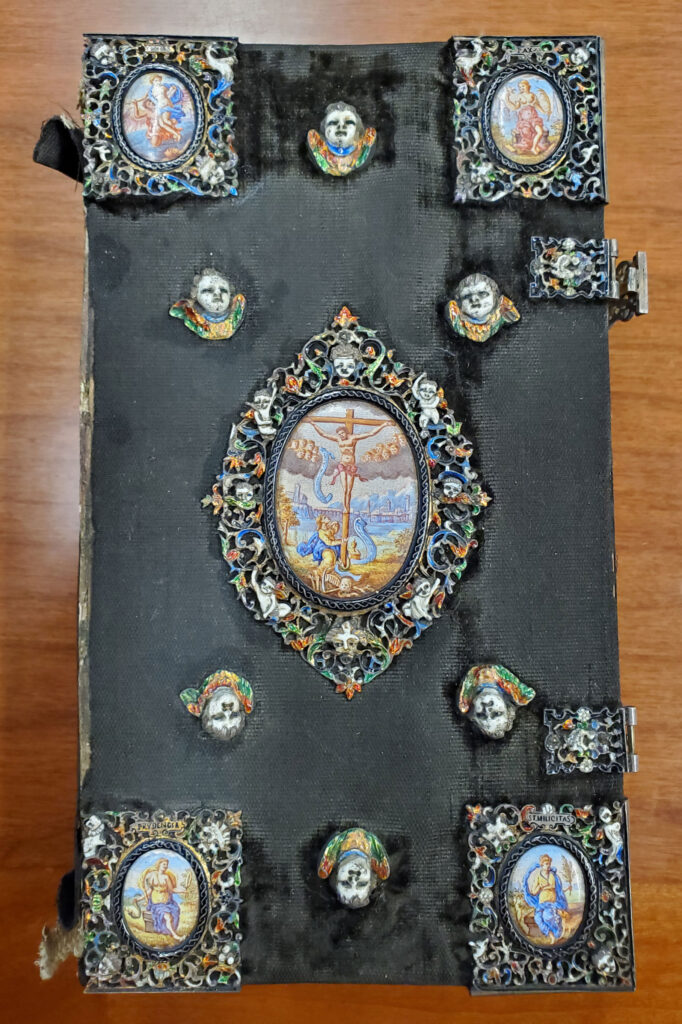
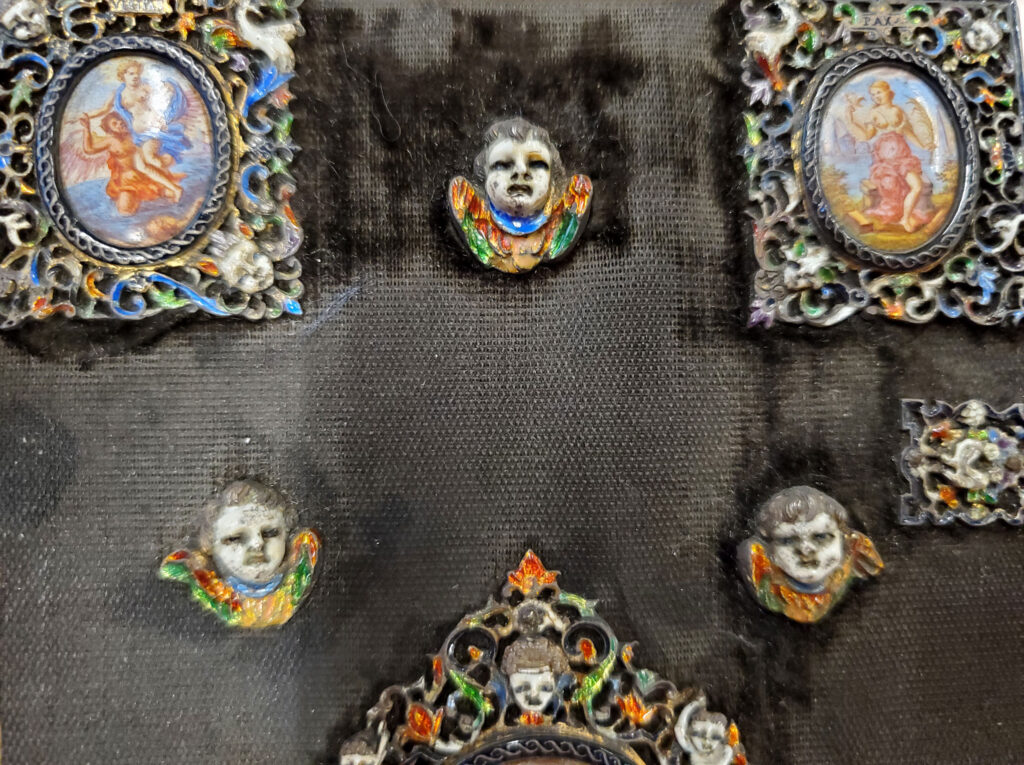
In an age of paperbacks and ebooks, treasure bindings serve as reminders of the beauty and physicality of books, as well as the craftsmanship and design that goes into producing beautiful books. For more information about treasure bindings, other beautifully bound books, and the Rare Book Collections, please contact the Rare Book Collections Curator, Cassie Brand.
Sources Cited:
- “Medieval Bindings.” The British Library. The British Library, September 12, 2018.
- “The Art of the Book in the Middle Ages.” metmuseum.org. Accessed March 23, 2021.
- McKinney, Kelsey. “Sangorski and Sutcliffe: The Rolls Royce of Bookbinding.” Ransom Center Magazine, December 10, 2012.
